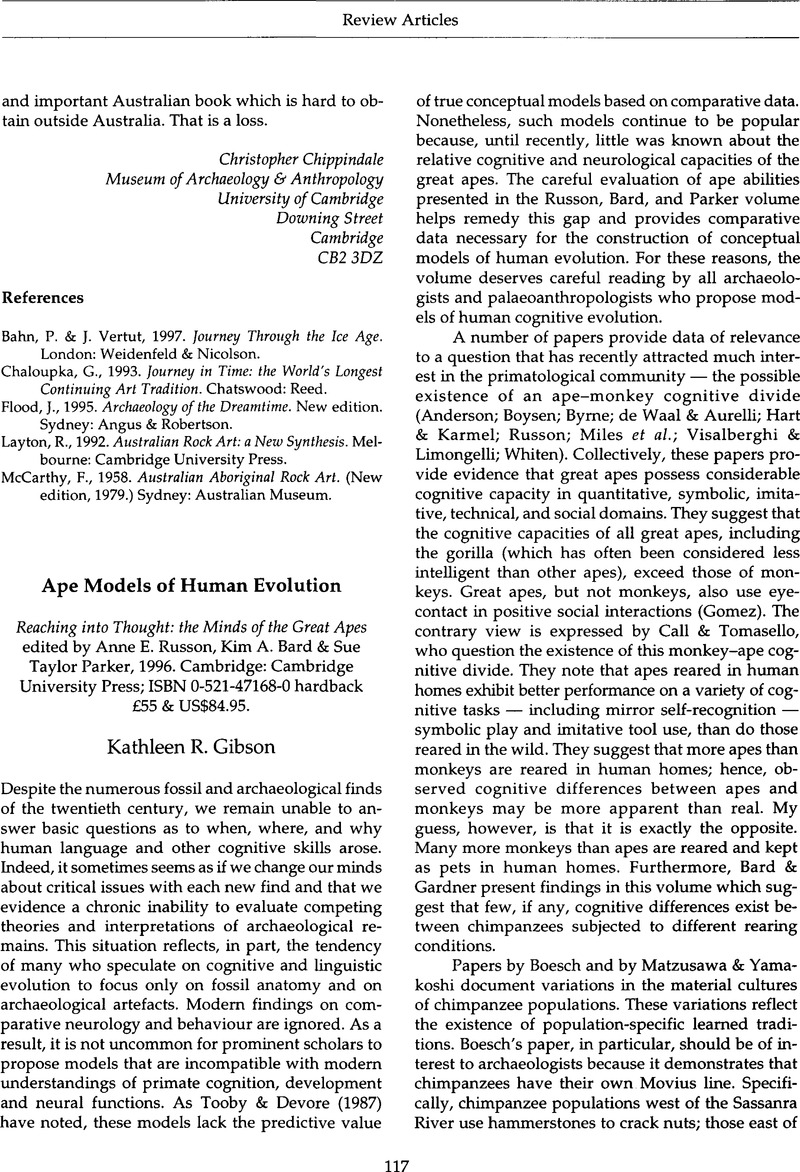Gibson, K.R.,
1990. New perspectives on instinct and intelligence: brain size and the emergence of hierarchical mental constructional skills, in
Language and Intelligence in Monkeys and Apes: Comparative Developmental Perspectives, eds.
Parker, S.T. &
Gibson, K.R..
Cambridge:
Cambridge University Press,
97–
128.
Google Scholar 